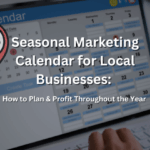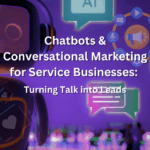The power of scarcity is something to behold. Many times it is the sole reason a prospect moves from ‘decide’ to ‘action’ in the sales funnel and lays his money down.
The worry and anxiety of losing something is so visceral, that very few people can resist it. It creates an instant pull towards the object/thing. Even if they don’t end up buying, they do feel an actual pull to the product, and the desire increases; unless they totally had no interest/desire for it in the first place.
Marketers have beat this to death, in the most mundane banal way. You have seen it. It is the: “limited time offer” text added to a deal. That is usually as far as most will take the phenomena of scarcity.
It is interesting to note that if a product just became scarcer (or became perceived to be scarcer) it would increase in sales. Nothing changed about the product itself, it wasn’t better, smarter, faster, stronger, it just became less available.
Using Scarcity on Product Availability
Simply put, it is: the fact that the product actually will not be available to purchase in the future, and techniques of communicating this so that the prospect understands what he will be missing out on.
This is achieved very simply:
1) The product is limited in stock and will not be available (things on clearance, etc)
2) The special offer is time-sensitive and will end (flash sale, etc)
3) Only a certain number of people are able to register/enroll, a cut off capacity
4) Product about to be discontinued
5) The product/service may be banned in the future, and is still legal now
Threat of Loss
If we look much closer at the psychology of scarcity, we see a few things. One the obvious, that value increases when something is more scarce, as in the above. This is plain and easy to see.
There is another factor however, which we can extrapolate and use.
One of the human responses to scarcity is the feeling of a threat of loss, or potential loss. We know that this makes them value it more. But what else does this tell us? It tells us that generally, simply and plainly that: the threat of loss by itself makes a person react.
In other words, instead of being mundane and saying “oh, it is a limited time offer, you should get it now”, you can go deeper and tell the prospect what he stands to lose personally if he does not have your product.
It means: “if you don’t get our product X, then all those undesirable conditions we spoke of earlier, will not get resolved, and in fact, will get worse, because they haven’t been dealt with”. In this case you are imposing on him a threat of some kind of loss, or harm, if he doesn’t do X.
This fits like a glove with marketing and sales because good marketing is defined as helping the consumer solve a problem, and communicating to him so that he understands our product/service will help him solve that problem.
So, right there we predicate the entire subject of marketing & sales on the fact that our consumers have problems. Therefore, since they have problems, these problems are likely to get worse unless they are dealt with. Enter: the threat of loss, or threat of harm.
All you have to do is find out what the prospects’ pain points/problems are, have him confront them and their ramifications, explain to him that your product/service can handle it, then have him confront what will happen if they don’t get resolved, and what he stands to lose if he doesn’t get your service/product; and that’s it.
When writing sales copy for a website or communicating with a prospect, know well the problems that your product/service solves, and communicate to clearly what a person has to lose by passing you up.






